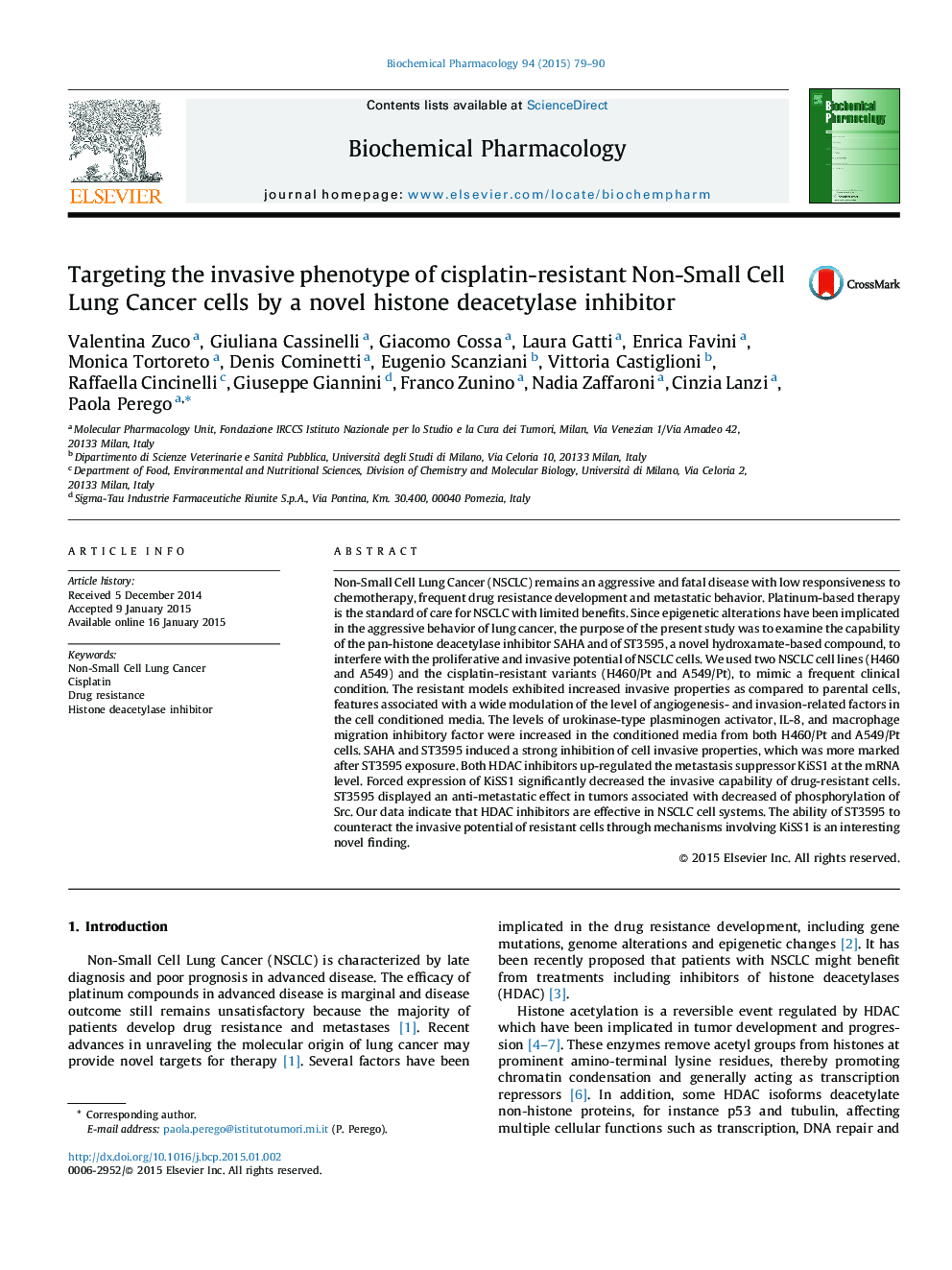| کد مقاله | کد نشریه | سال انتشار | مقاله انگلیسی | نسخه تمام متن |
|---|---|---|---|---|
| 2512077 | 1118312 | 2015 | 12 صفحه PDF | دانلود رایگان |
Non-Small Cell Lung Cancer (NSCLC) remains an aggressive and fatal disease with low responsiveness to chemotherapy, frequent drug resistance development and metastatic behavior. Platinum-based therapy is the standard of care for NSCLC with limited benefits. Since epigenetic alterations have been implicated in the aggressive behavior of lung cancer, the purpose of the present study was to examine the capability of the pan-histone deacetylase inhibitor SAHA and of ST3595, a novel hydroxamate-based compound, to interfere with the proliferative and invasive potential of NSCLC cells. We used two NSCLC cell lines (H460 and A549) and the cisplatin-resistant variants (H460/Pt and A549/Pt), to mimic a frequent clinical condition. The resistant models exhibited increased invasive properties as compared to parental cells, features associated with a wide modulation of the level of angiogenesis- and invasion-related factors in the cell conditioned media. The levels of urokinase-type plasminogen activator, IL-8, and macrophage migration inhibitory factor were increased in the conditioned media from both H460/Pt and A549/Pt cells. SAHA and ST3595 induced a strong inhibition of cell invasive properties, which was more marked after ST3595 exposure. Both HDAC inhibitors up-regulated the metastasis suppressor KiSS1 at the mRNA level. Forced expression of KiSS1 significantly decreased the invasive capability of drug-resistant cells. ST3595 displayed an anti-metastatic effect in tumors associated with decreased of phosphorylation of Src. Our data indicate that HDAC inhibitors are effective in NSCLC cell systems. The ability of ST3595 to counteract the invasive potential of resistant cells through mechanisms involving KiSS1 is an interesting novel finding.
Figure optionsDownload as PowerPoint slide
Journal: Biochemical Pharmacology - Volume 94, Issue 2, 15 March 2015, Pages 79–90
